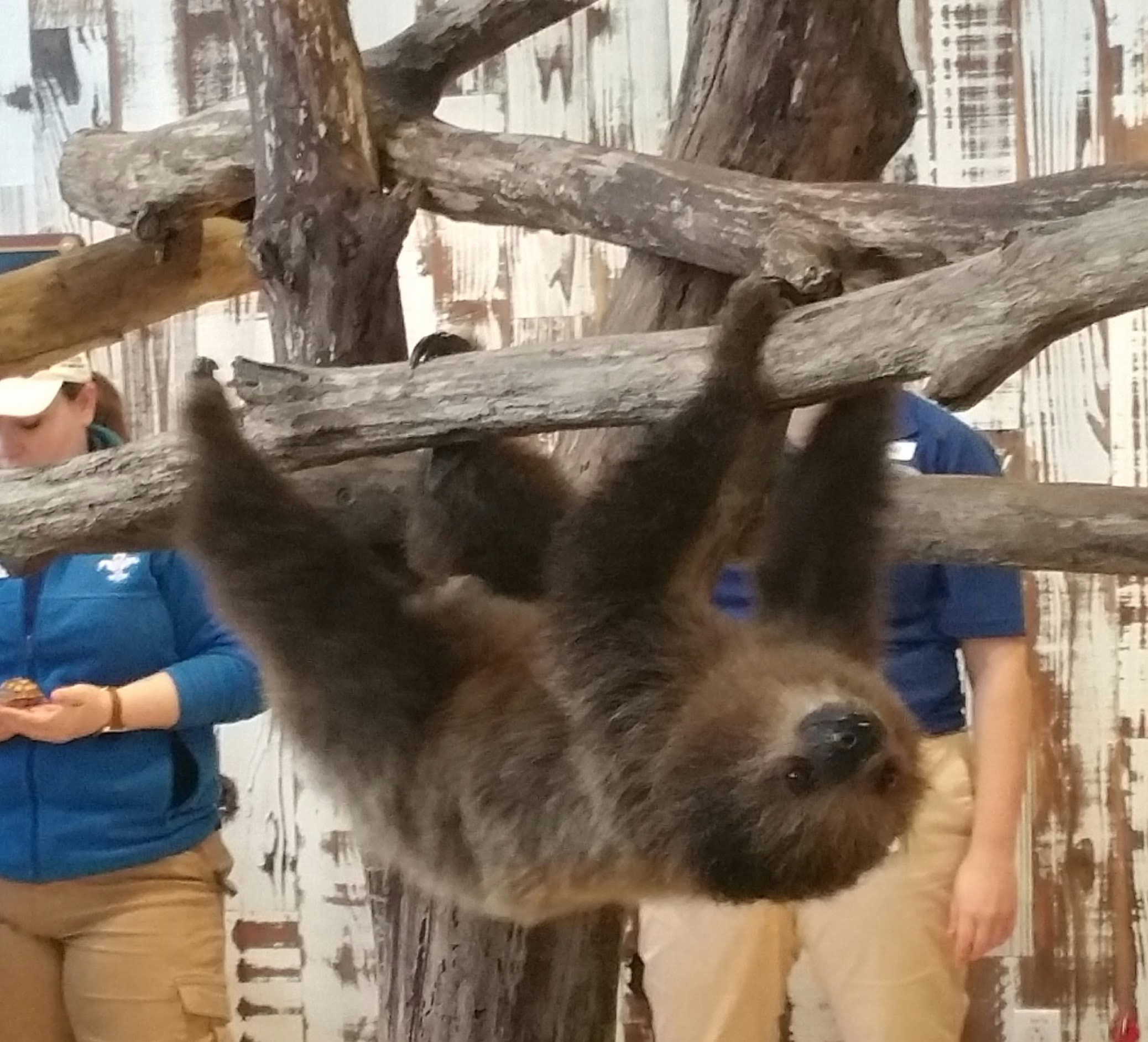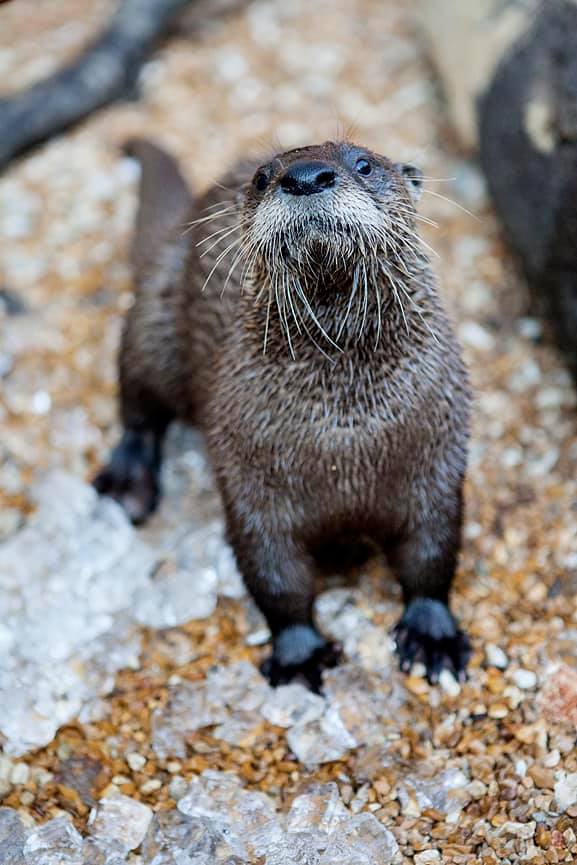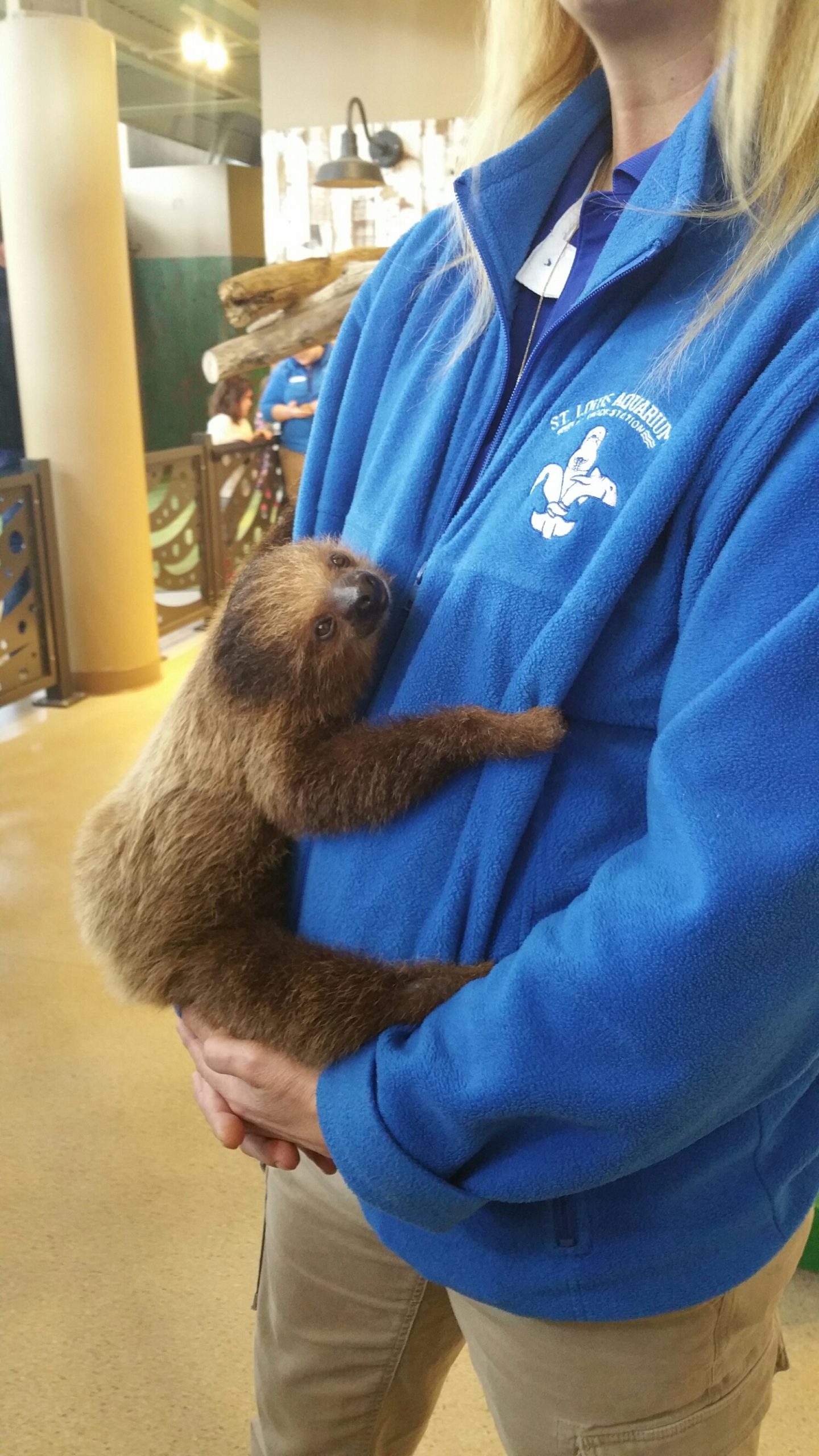
There’s another creature who will soon be ready for her close-up at the St. Louis Aquarium at Union Station: Coconut the Sloth made her debut this morning as the aquarium’s newest animal ambassador.

Coconut is a Linnaeus’s two-toed sloth, who will turn a year old this month on Feb. 20. She is a juvenile female who will turn one year old on February 20, 2020.
Kat Echevarria, animal care manager of training at the St. Louis Aquarium, says the sloth will initially make appearances early in the day, usually soon after the aquarium opens. Coconut will be stationed at the Animal Encounters area on the second floor; and eventually be rotated into a schedule with the other animal ambassadors.

As an animal ambassador, Coconut joins other St. Louis Aquarium critters, ranging from sugar gliders and turtles to snakes, to enhance visitors’ experiences and create educational opportunities. Like the other animals, Coconut will need time to settle into her new home. She’s currently working with her trainers to establish relationships based on trust. She will eventually make regular appearances at the aquarium, but officials say with animal welfare being the facility’s No. 1 concern, the sloth’s appearances will be limited for the time-being until trainers determine that a stable foundation has been established.

Coconut, who comes from another zoological facility and was born in human care, currently weighs approximately 2.5 pounds. She sleeps about 20 hours a day, which is typical for a juvenile sloth. By comparison, adult sloths sleep 15 to 20 hours a day.
Coconut’s animal care managers say she is calm by nature, but gets active and impatient when she knows it’s time to eat. Handlers have been spending time with Coconut since her arrival to allow her to literally hang on them for the next couple of years to mimic their natural behavior. Sloths are primarily solitary, but young sloths stay near their mothers for the first one to two years and remain close for up to four years.
In the wild, sloths live in the rainforests of South America. Their predators include ocelots, jaguars, eagles and anacondas. Although known to be slow, sloths will use their very long, sharp teeth and claws to defend themselves, if necessary. Their fur varies from gray-brown to beige, but in the wild, it generally develops a green color due to the algae that grows in their fur, which also aids in camouflaging them in the trees.
Sloths live in the treetops almost their entire lives and only come to the ground once a week to “use the restroom.” They primarily eat leaves, twigs, fruit, and flowers, digesting their food extremely slowly. One meal can take up to a month to make its way through their system!
They hang from trees using their long limbs and long curved claws. The two-toed sloth has two long nails on the forelegs and three on their hindlegs. Since they hang most of the time, their hair grows from their stomach toward their back, allowing rain to run off of them.
Sloths in human care are known to live to about 30 to 40 years, while sloths in the wild generally live less than 20 years. Sloths usually reach a weight between 8 and 18 pounds and are between 23 to 28 inches in length.
Their conservation status is Least Concern, however, as with many rainforest animals, both two-and three-toed sloths are threatened by destruction of their habitat. One and a half acres of rainforest is lost every second to logging and burning. Where rainforests once covered about 40% of the earth’s surface, they now make up only 6%, with experts fearing even that could be gone in the next 40 years.

For updates on Coconut the Sloth and her public appearances, as well as the aquarium’s other animal ambassadors, follow the St. Louis Aquarium on social media, @aquariumstl
The St. Louis Aquarium is the centerpiece of a $187-million family entertainment complex at St. Louis Union Station. The 120,000-square-foot attraction featuring more than 13,000 aquatic animals from fresh water and marine environments around the world opened to the public on Christmas Day 2019.





